Kent Day is celebrated on 26th May, the feast day of St Augustine. In celebration, we present a few of the county’s sometimes overlooked gems in Off the Beaten Track.
Kent’s name derives from the Cantii, an ancient British tribe. Kent was a British kingdom before the Romans came and after them it soon became a Jutish kingdom. It could almost still be considered a small country, based on the richness of its heritage, the beauty of its landscapes and the diversity of its settlements and economic activities.
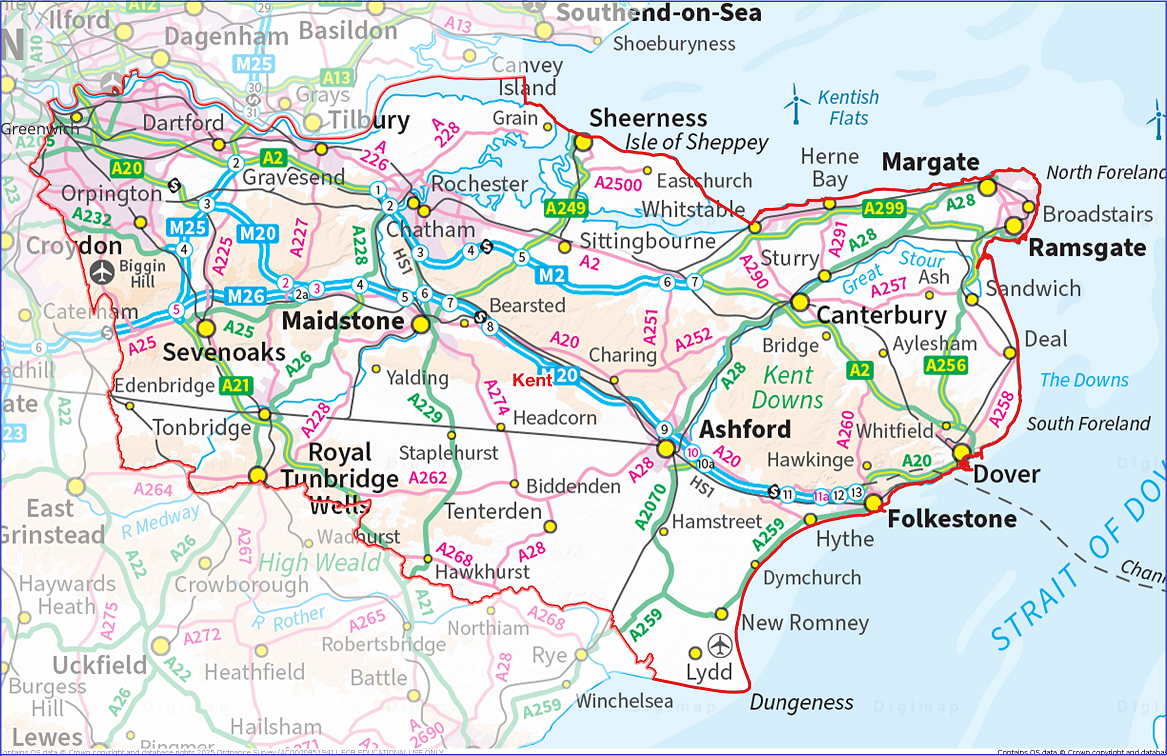
The north-west of Kent, from Lewisham and Greenwich out to Bromley, is part of the metropolitan conurbation, containing a great variety of townscapes. Rural Kent holds a great variety of landscapes, from the North Downs, to the delightful Weald, down to the fertile solitudes of Romney, Denge, and Walland Marshes stretching inland from the south coast, and the Isle of Thanet in the north-east.
The Coldrum Stones, Trottiscliffe
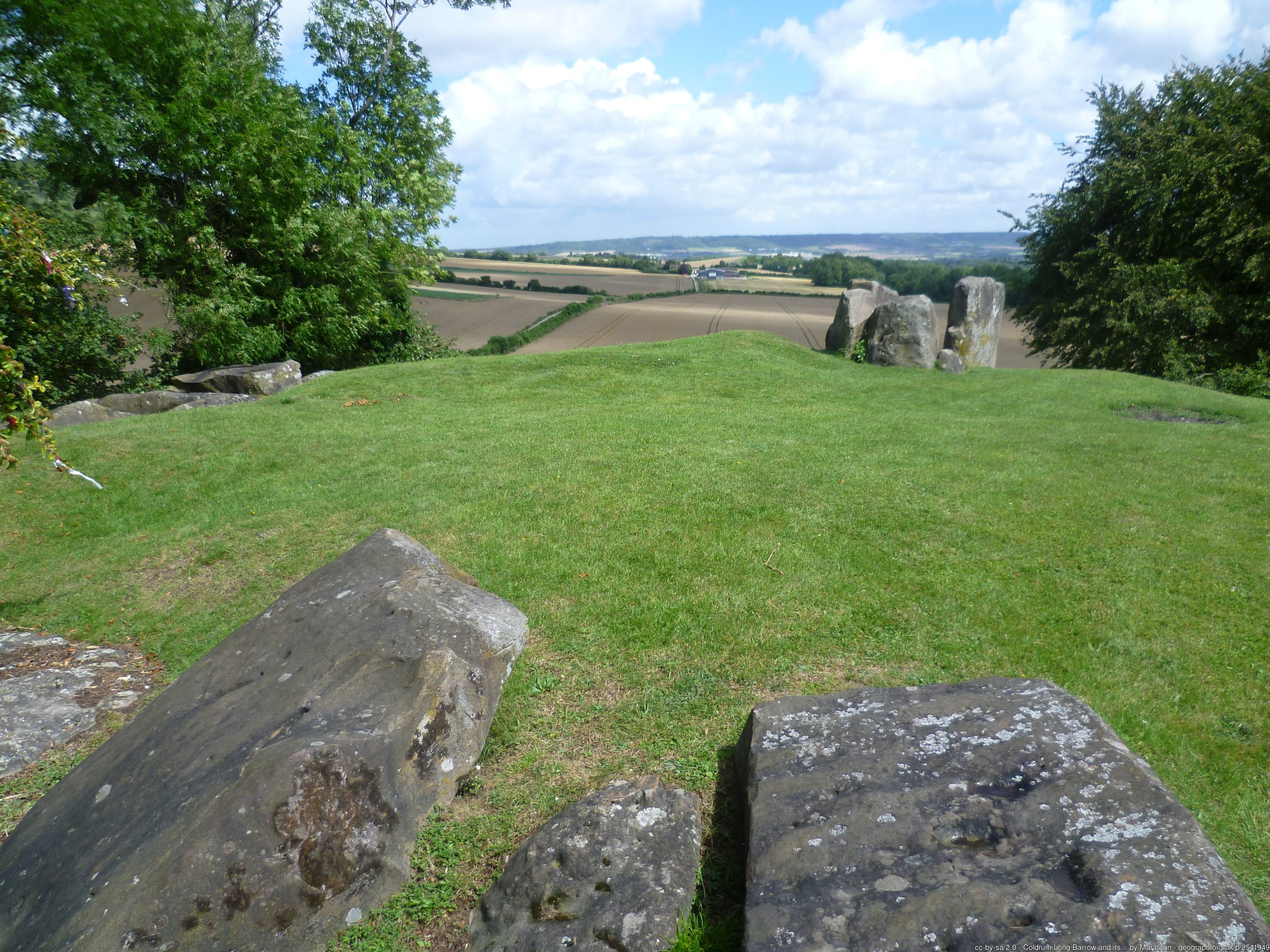
Exactly when the kingdom known to the Romans as ‘Cantium’ was formed is not known, though the area was inhabited for thousands of years before Roman times. The Medway Megaliths are a set of Early Neolithic chambered long barrows, constructed from local sarsen stone and soil between the 4th and 3rd millennia BC. Three tombs lie west of the river: the Coldrum Stones, Addington Long Barrow and Chestnuts Long Barrow. Three tombs lie east of the river: Kit’s Coty house, Little Kit’s Coty House and Smythe’s Megalith. The Coldrum Stones, near Trottiscliffe, is the only one of these to remain virtually intact. Archaeologists continue to debate the nature and purpose of these monuments. Much local folklore is attached to them. They are sacred sites to contemporary Pagans and an oasis of peace for everyone.
The White Horse Stone, Boxley Warren
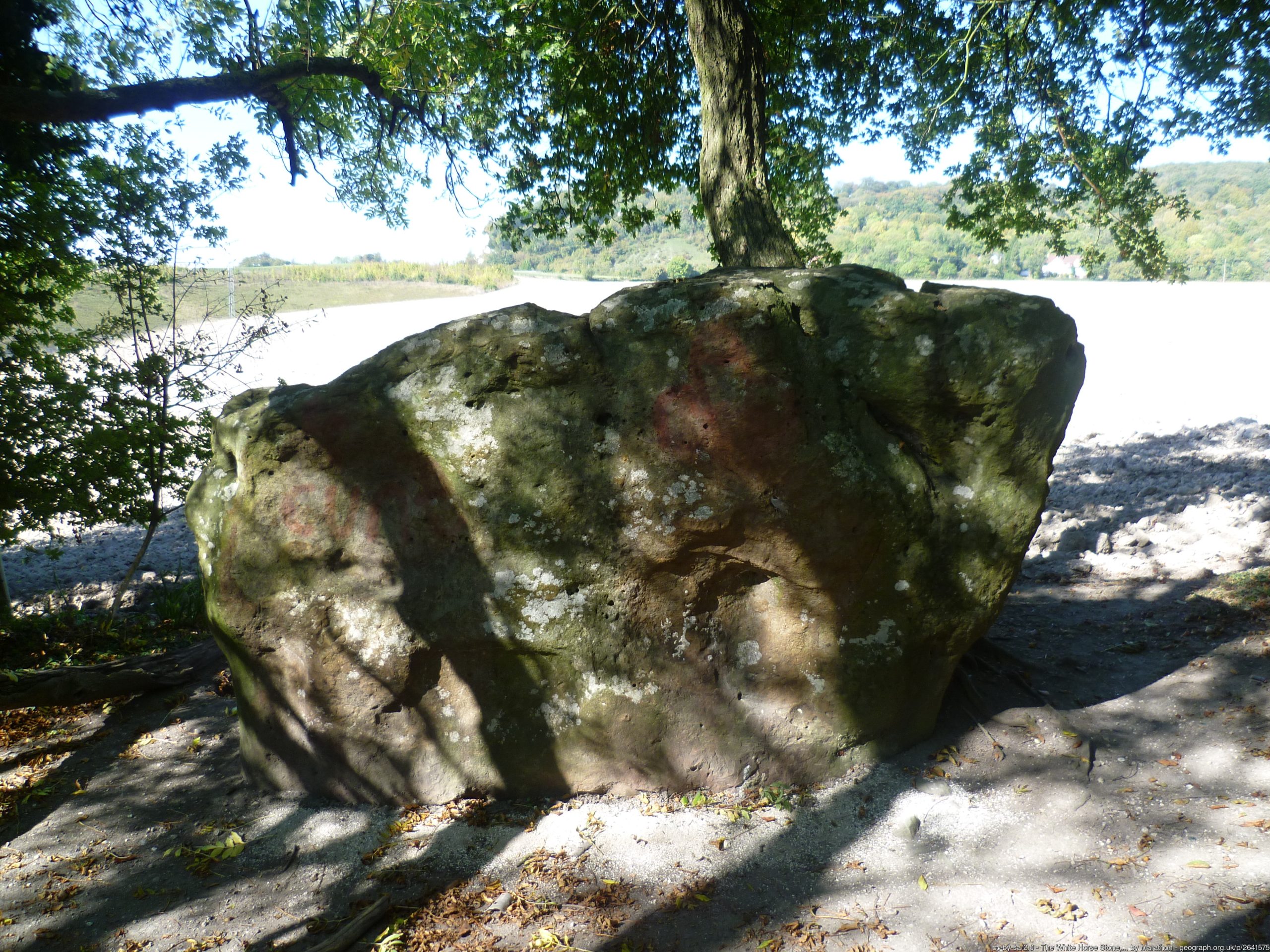
The White Horse Stone is a prehistoric 5ft high sarsen standing stone situated in a narrow strip of woodland next to the North Downs Way – a trackway following the ridge of the North Downs escarpment, traditionally associated with a pilgrim route to Canterbury. It may originally have formed part of a Neolithic burial chamber but this is uncertain. The stone is considered sacred by some contemporary Pagans because of its folkloric associations with Hengest and Horsa and the Anglo-Saxon Migration.
St Martin’s Church, Canterbury
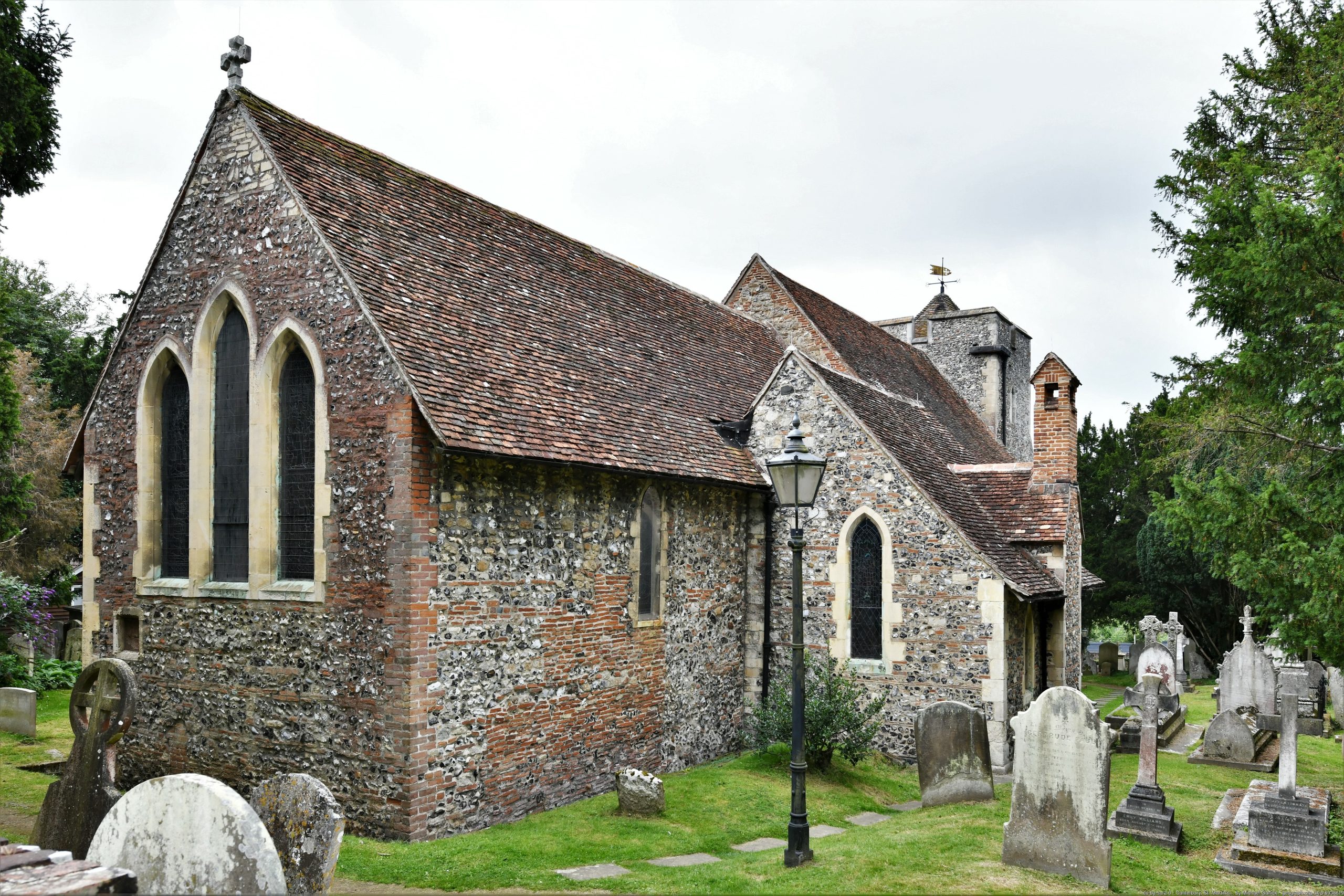
St Augustine famously arrived on the Isle of Thanet in 597 AD, establishing his monastery at Canterbury in 598 AD. And yet a Christian Church was already in use in Canterbury prior to this. St Martin’s was the private chapel of Queen Bertha of Kent, a Christian Frankish princess. Her husband King Æthelberht allowed her to continue to practice her religion by renovating a Roman-British building around 580 AD. Æthelberht himself became a Christian sometime around this period and gave the land for Augustine to establish his monastery and Canterbury Cathedral. St Martin’s Church has continued in use ever since. Though most of the building dates from later periods, it is recognised as the oldest church building in Britain still in use as a church.
St Augustine’s Cross, Cliffs End
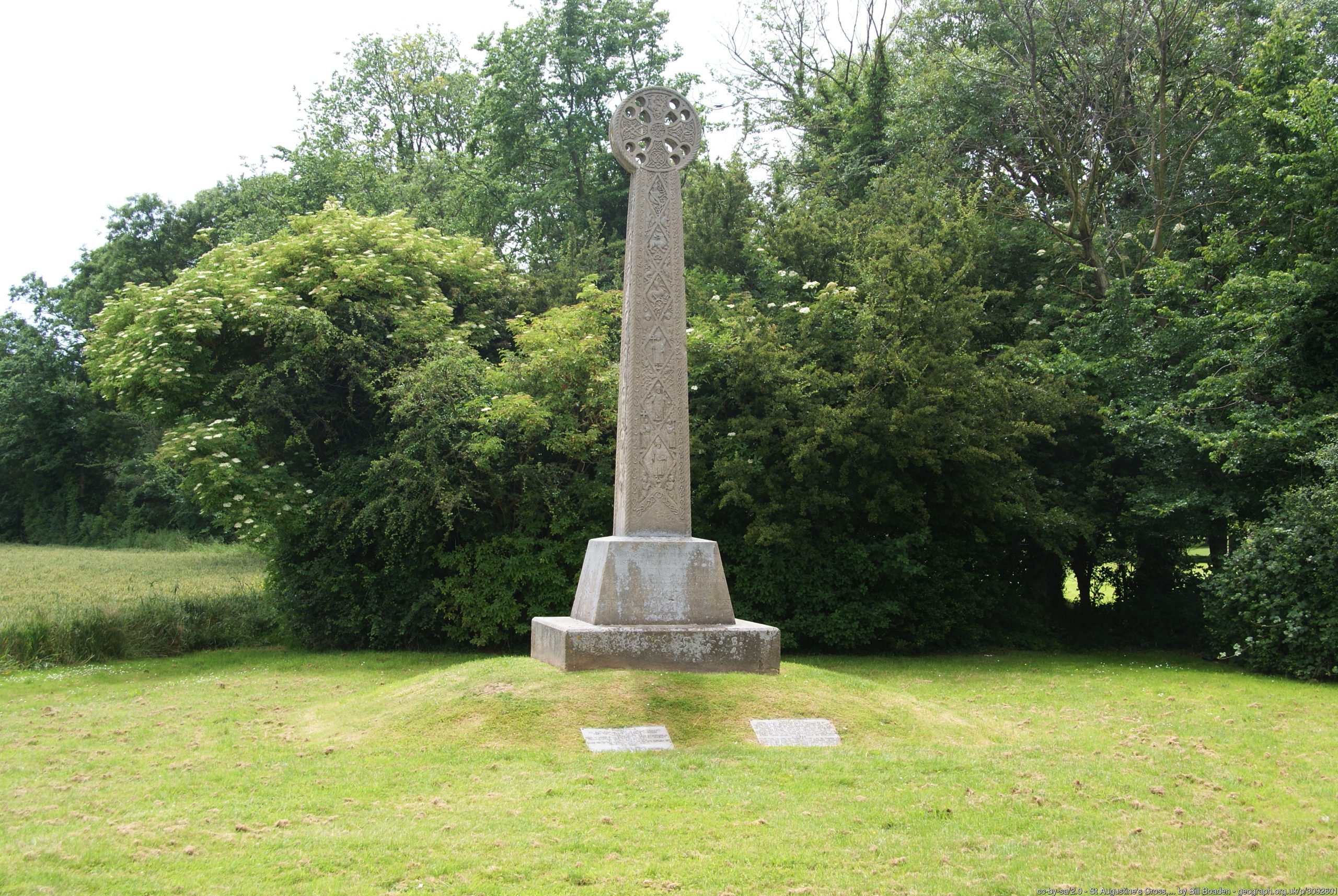
St Augustine’s Cross marks the traditional site where St Augustine first met with King Æthelberht, following Augustine’s landing at Pegwell Bay. According to tradition, the first meeting between Æthelberht and the Augustine took place under an oak tree. The oak became a famous local landmark, known as St Augustine’s Oak. St Augustine’s Cross was commissioned in 1884 by Granville George Leveson-Gower, 2nd Earl Granville, Lord Warden of the Cinque Ports, to replace the oak which had been felled within his living memory . The cross is modelled on the 8th–9th century crosses at Sandbach, Cheshire. To the south-east is St Augustine’s Well, in which Augustine baptised his first convert, now sited on a golf course.
Temple Manor, Strood
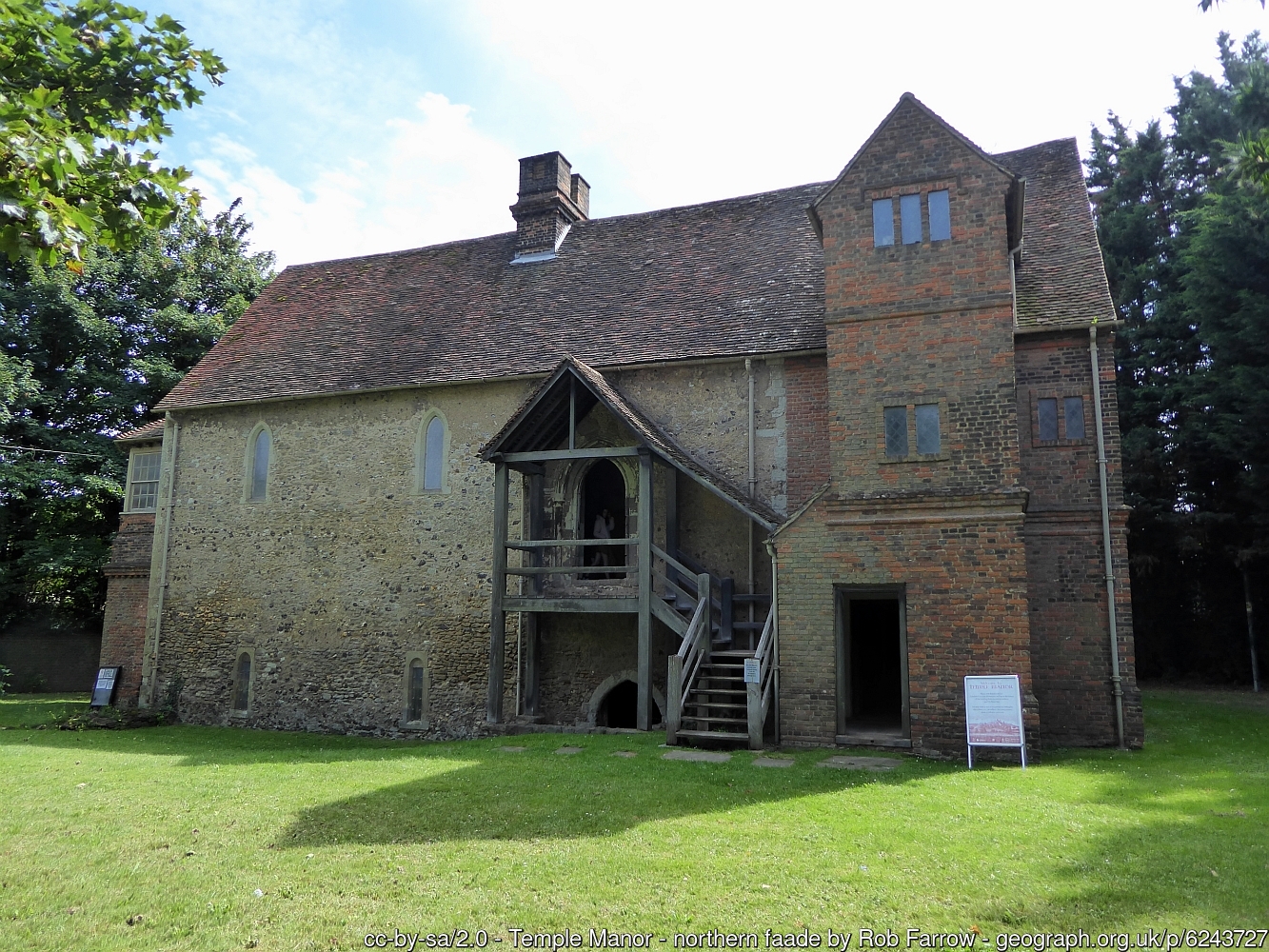
Temple Manor is the remains of a 13th-century Knights Templars’ manor house and ‘camera’, now squeezed between a railway line and an industrial estate in Strood. The site was part of a royal manor until c.1159 when Henry II granted it to the Knights Templars. When the Knights Templar were suppressed in 1312, Temple Manor passed to the Knights Hospitaller. A succession of owners followed the Dissolution, with the site being sold to the City of Rochester in the 1930s. The upstanding remains now comprise the 13th century stone hall on a vaulted undercroft, with 17th century red brick extensions. There are fascinating traces of wall paintings in the first floor hall.
Lesnes Abbey, Abbey Wood
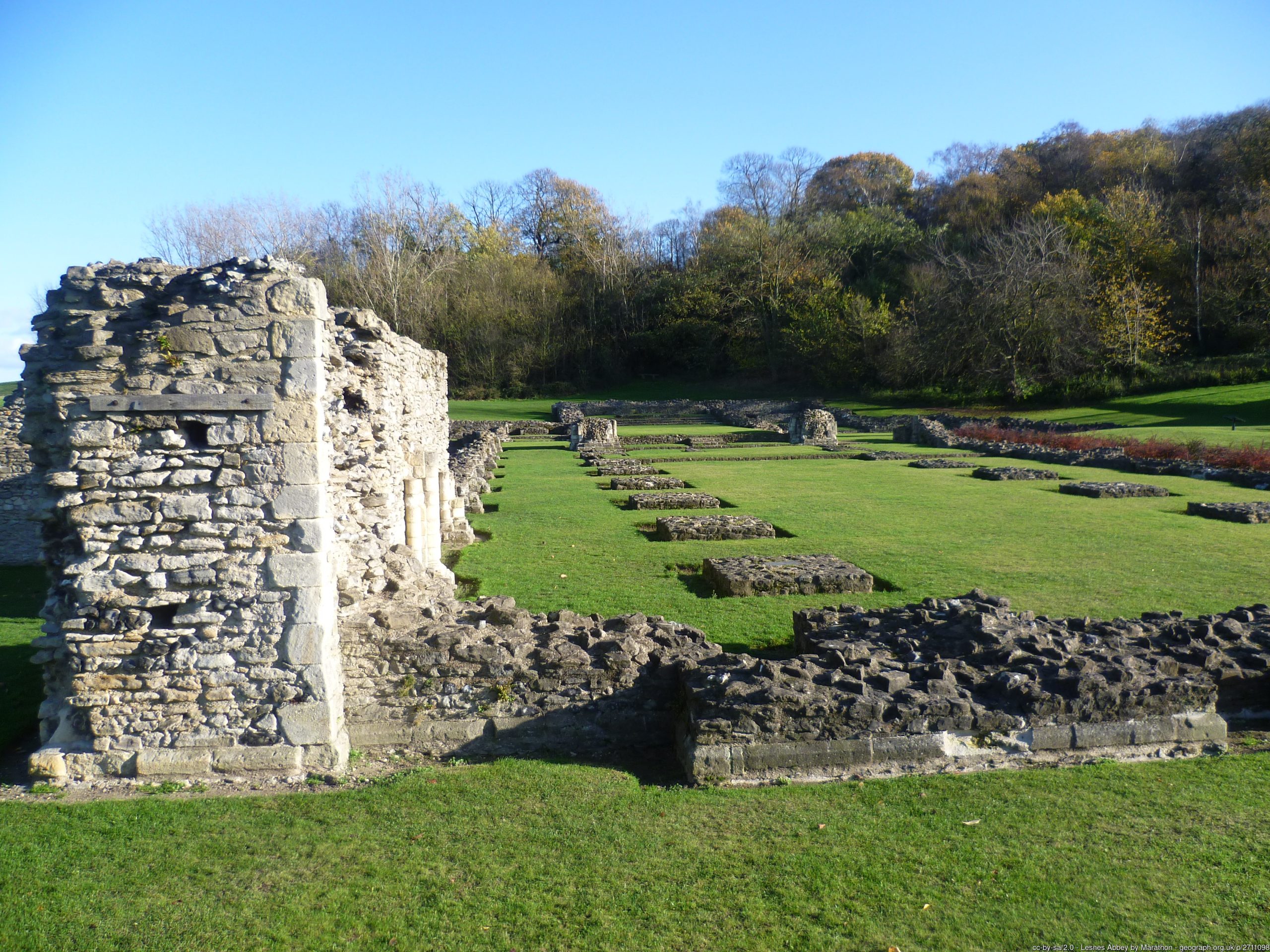
One of the overlooked gems of the metropolitan part of Kent, Lesnes Abbey is a ruined 12th-century abbey, now lying within Lesley Abbey Woods country park. The abbey was founded by Richard de Luci, Chief Justiciar of England, in 1178. The Abbey was closed by Cardinal Wolsey in 1525. Despite later use and alterations, Lesnes Abbey survives well with much original surviving mediæval masonry and stonework. The abbey gave its name to Abbey Wood and the hamlet of that name. Despite the opening of Abbey Wood railway station in 1849, the area remained rural until the 1950s, when the Abbey Wood housing estate was built.
The Shell Grotto, Margate
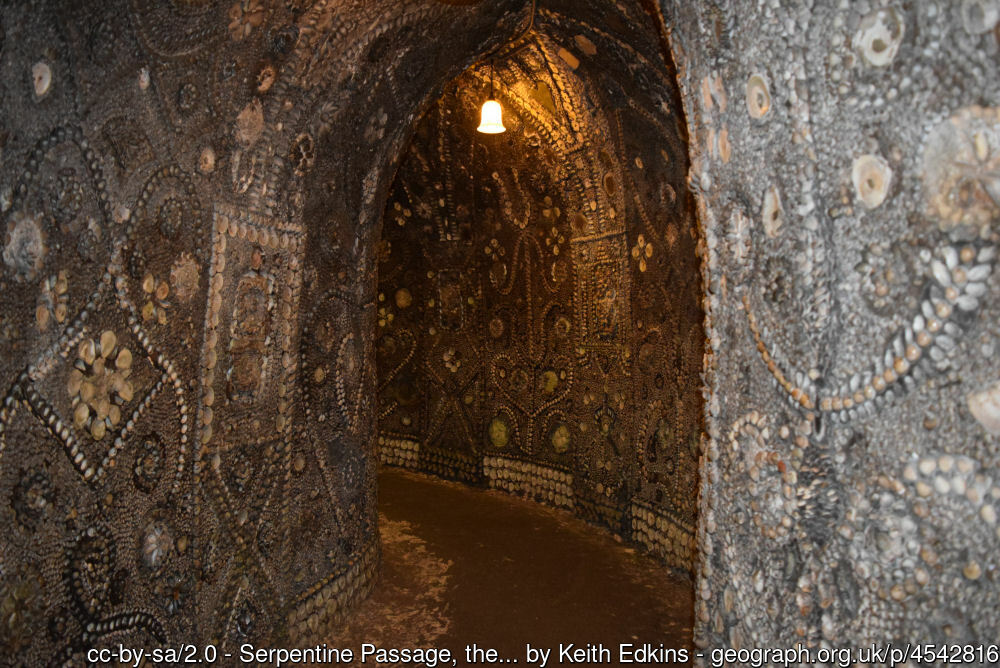
Underneath Margate is a true enigma – the Shell Grotto. We can’t put it better than the Grotto’s owners: “Discovered by chance in 1835, the subterranean Shell Grotto’s curving chalk walls are studded with 4.6 million shells. They create a magical mosaic of strange patterns and symbols. Was this a place of worship, a setting for secret meetings or an extravagant folly? For every expert who believes it to be an ancient temple, there’s someone else convinced it was the meeting place for a secret sect; for every ardent pagan, there’s a Regency folly-monger ready to spoil their fun. However, there’s only one fact about the Grotto that is indisputable: that it is a unique work of art that should be valued and preserved, whatever its age or origins.“
The Paragon, Blackheath
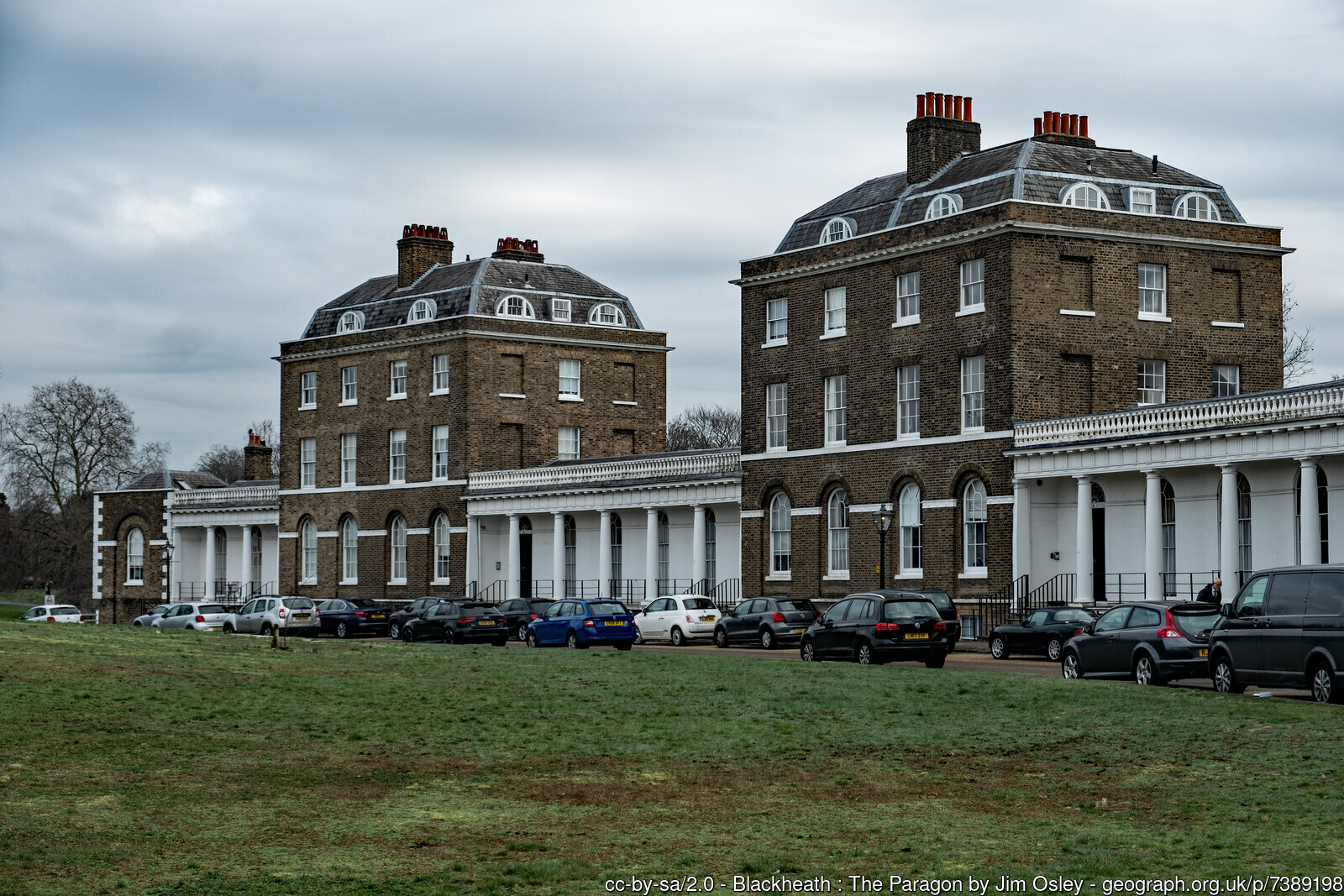
The suburban village of Blackheath was developed as a high class settlement on the southern side of the eponymous heath from the late 18th century. Landowner John Cator granted land to architect Michael Searles and builder William Dyer to design and build high quality dwellings. The Paragon is regarded as Searles’ masterpiece, a 14-house perfect crescent occupying a semi-circular plot in the corner of the Heath. The Paragon comprises seven blocks of semi-detached houses, each linked by a single story Roman Doric colonnade, with a lodge house at each end. Pevsner described it as ‘one of the finest Georgian crescents in England’.
The Battle of Britain Memorial, Capel-le-Ferne
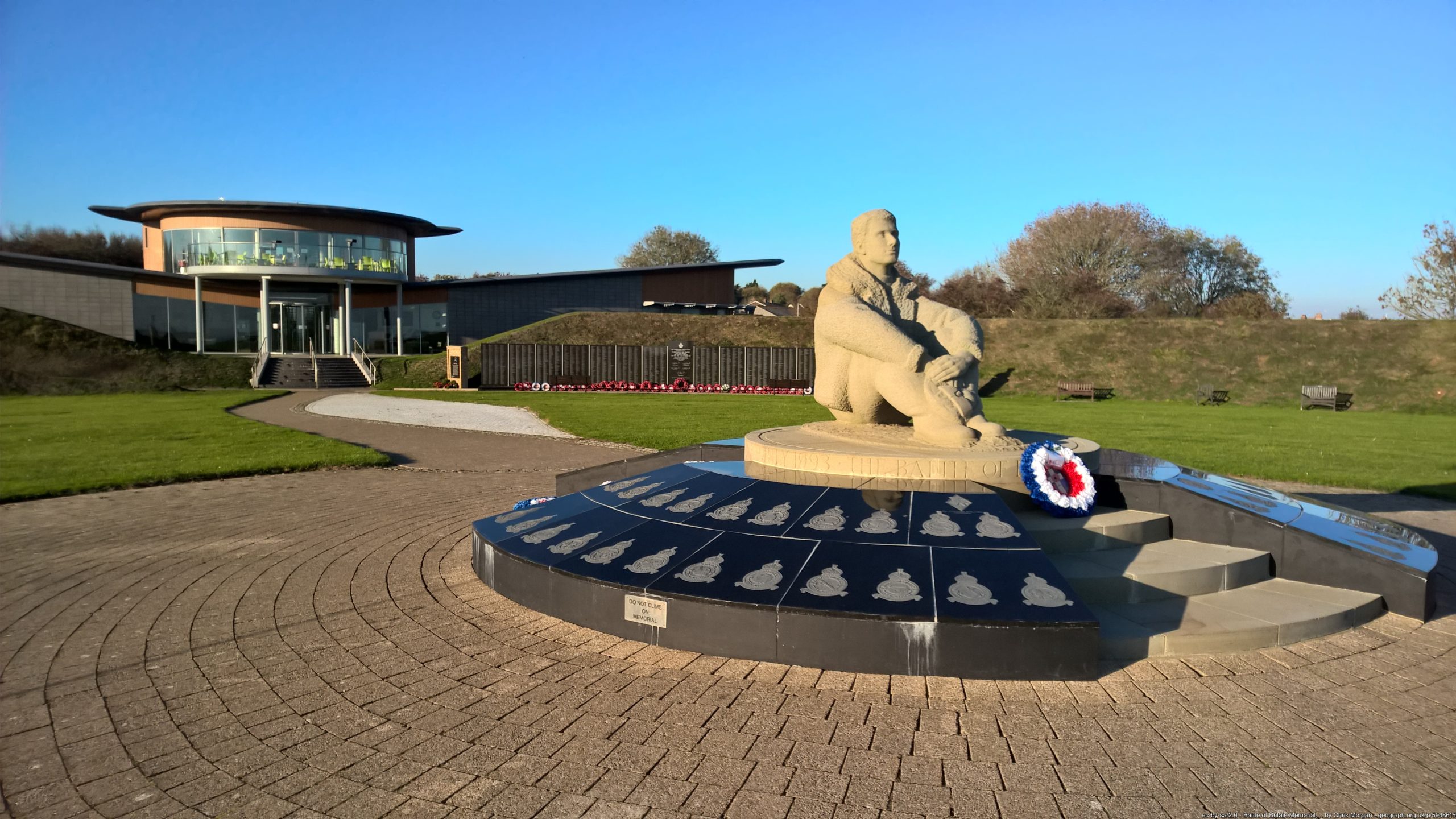
Kent has long been a place of pilgrimage. We should all make the pilgrimage to the Battle of Britain Memorial, situated atop the White Cliffs at Capel-le-Ferne. Opened by the Queen Mother in 1993, it is formed of a large propeller-shaped base, with the figure of a seated pilot, carved by Harry Gray, looking out across the Channel. The Christopher Foxley-Norris Memorial Wall contains the names of the almost 3,000 fighter aircrew who flew in the Battle. The visitor centre, ‘The Wing’, was designed in the shape of a Spitfire wing and opened by Queen Elizabeth II in 2015.
That’s our look at some of the lesser known gems of Kent. There are, of course, countless more. What would be your choices?
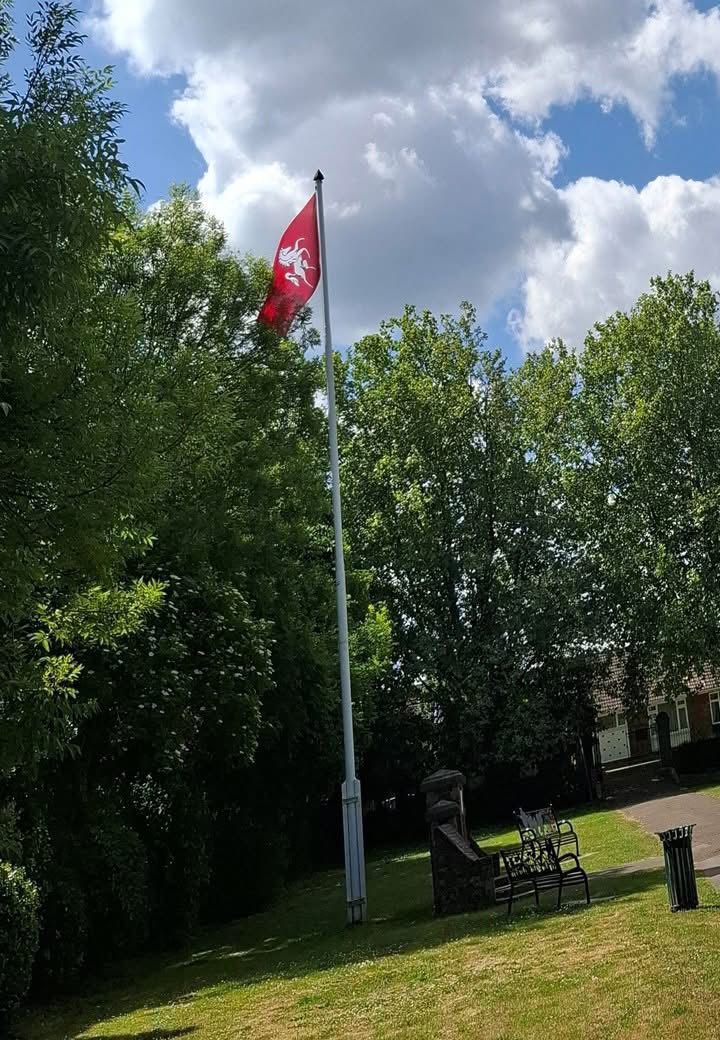
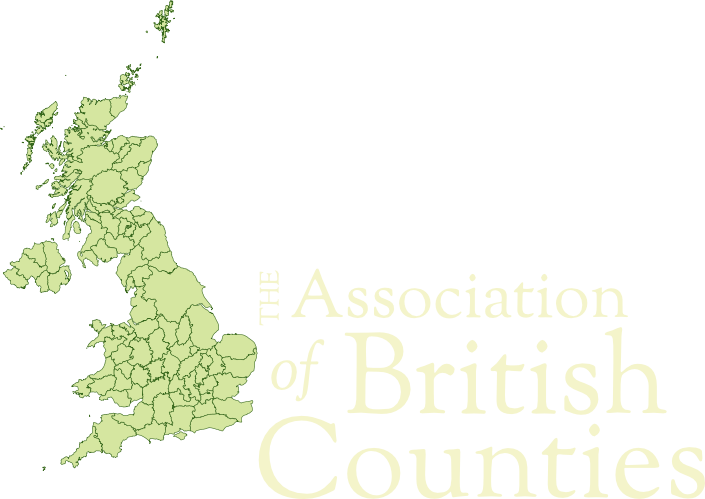

3 thoughts on “Kent Day: Off the Beaten Track”
Happy Kent Day!
Does anybody know if London’s Kentish Town is named for the county?
From https://wikishire.co.uk/wiki/Kentish_Town
The name “Kentish Town” has nothing to do with Kent, but is from “Ken-ditch Town”; the Ken Ditch appears to be a by-name for the early stream of the River Fleet; Kentish Town was originally a settlement along the Fleet, which river today runs underground
Thank you for that.
Most interesting. 🙂